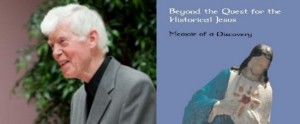 Continuing the series on Thomas Brodie’s Beyond the Quest for the Historical Jesus: Memoir of a Discovery, archived here. Continuing the series on Thomas Brodie’s Beyond the Quest for the Historical Jesus: Memoir of a Discovery, archived here.
This post begins with the final section of Brodie’s book, Part V, Glimmers of Shadowed Reality: Some steps towards clarifying Christianity’s origin and meaning.
|
In this final section Thomas Brodie attempts to offer an explanation for Christian origins without an historical Jesus. He then shares his own reflections on what it means to be a Christian and to abide in a deep faith in God even though he no longer believes Jesus walked this earth. For Brodie, Jesus becomes a profound symbolic expression of the nature and character of God.
Chapter 18, “Backgrounds of Christianity: Religions, Empires, and Judaism”
Brodie opens with a panoramic sweep of the worlds major religions and laments that in all cases we are left without answers to the questions of exactly how and through whom they originated.
Nonetheless, Brodie finds cause for some optimism from our ability at least to know something of the world from which Christianity emerged. So he covers here the usual story of ancient empires — Persian, Hellenistic, Roman — and the way they led to the concept of a universal imperial peace and more effective bonds of communication, culture, language, law, and so forth.
Add to this the diversity of Judaism and even the chaotic disunity of the Jews politically, culturally and geographically, and the catastrophic consequences of the Jewish War of 66-73 CE.
The destroying of the temple meant that for Judaism the institutional centre was not merely in trouble; it was gone, and with it the traditional priesthood — a numbing moment for many, but for others a time to build something new. (p. 181)
And so we have many Jews eventually falling in with rabbinical traditions — with new writings coming to form the Mishnah and eventually the Talmud, while some others followed a new way of a new Joshua (=Jesus) . . . .
Chapter 19, Christian Origins: Writing As One Key
Not that Brodie sees the fall of Jerusalem and destruction of the Temple as catalysts for the birth of Christianity. Critical though the events of 70 CE were, Brodie believes that the letters of Paul are sure evidence that
a role should also be given to the inspirations and divisions that existed within Judaism prior to 70 CE. (p. 182)
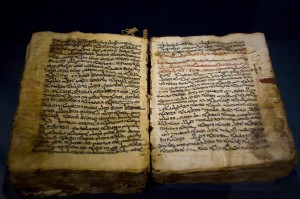
Brodie suggests that Christianity’s gestation will be found to be closely associated with a well developed process of writing from its beginning. He brackets this possibility with a similarly critical role for writing in other major historical events, such as the Magna Carta, the Reformation, the US Constitution, the Communist Manifesto, and so forth.
But what is certain is that, while the Jewish people became known as the People of the Book, the Christians became de facto the primary developers of the codex, the bound book which replaced scrolls, and which, whatever its origin, emerged energetically about the same time as Christianity. (p. 182)
The bottom line for Brodie is that coordinated writing played a significant part in Christianity’s origin. To support his claim he addresses six points.
1. Christianity was founded significantly on a process of rewriting
Brodie sees both the foundational narrative and the institutions of Christianity “to a large degree” as “an adaptation of the narrative and institutions of Judaism.” We have seen in previous posts in this series how Brodie saw Jesus and Paul as intertextual (re)creations of various Old Testament characters. As for the institutions, he quotes Nodet and Taylor’s The Origins of Christianity:
The central elements of Christianity in their entirety, including the eucharist, the cross and the system of excommunication, are directly derived from the Jewish “sects” of the most traditional type claiming to represent the renewal of the true Covenant, especially in Galilee (Nodet and Taylor 1998: 437) (p. 183)
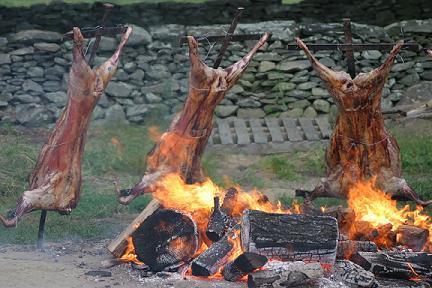 The cross, too? From Jewish sects? That one sent me to the source and luckily the relevant pages — pp. 353 ff — are available via a keyword search (“cross” “Justin” “spit”) on amazon.com
The cross, too? From Jewish sects? That one sent me to the source and luckily the relevant pages — pp. 353 ff — are available via a keyword search (“cross” “Justin” “spit”) on amazon.com
Justin Martyr gives a precise description of what the paschal lamb looked like: “When the lamb is roasted, it is arranged in such a way as to represent the cross: a spit goes right through it from the lower limbs to the head, another spit is at the shoulder, to which the paws arc fastened.” This description, which is not drawn from the Bible, may well show the influence of Christian symbolism, but it must have been close enough to actual Jewish custom for it to have made some sense to the Jew Tryphon.
Nodet then explains the reasons to think that this custom was still being continued despite the destruction of the Temple. He also alerts us to Melito of Sardis (fragment 9) and his phrase “like a lamb he has been crucified (or: spitted).” He then notes that
The Jewish custom referred to by Justin is attested by rabbinic sources . . . .
So Christianity started as an adaptation of the story and institutions of Judaism. Jesus and Paul were also modeled on figures from Judaism. Who was responsible for these re-writings?
* * *
2. The rewriting indicates coordination — a group or school
I find myself wholeheartedly in agreement with Brodie’s statement about the New Testament as evidence for Christian origins:
The first major evidence concerning the origin of Christianity comes not so much from what the New Testament says — otherwise we would begin Christianity with the angel Gabriel — but from what the New Testament is, and what it does. (p. 184)
It is clear that the New Testament’s collection of books are rooted in Old Testament scriptures. What is becoming increasingly clear is the extent to which they are all rooted and grounded in one another. Indeed,
the connections of the writings to one another are so many and so deep that as they were being written, the writers generally must have had access to those already written. They built on one another. . . .
As the pattern of connection becomes clearer so does a basic conclusion: Christianity was founded not just by one or two people but by a whole group. (p. 184, my bolding as in all quotations)
Brodie sees this literary (intertextual) evidence pointing to a group that was in fact some sort of school or community. How else to account for both the diversity and coordination of the twenty-seven writings of the NT?
So Brodie argues that Christianity was founded by a school of writers, most likely a religious community, most likely bonded by specific events and religious experiences.
This idea should not seem like something from out of left-field, Brodie explains, since researchers have concluded very similar origins behind other collections of books in the Bible. As for Luke-Acts, recall John Collins’ observation that the “eyewitnesses” referred to in the Preface very likely is speaking of “ministers of the word” and to a literary process sanctioned and taught by the community.
This leads Brodie to discuss comparable schools in the ancient world. . . .
* * *
3. The existence of other schools gives support to the idea of a New Testament school/group
Among the best known schools are
- the Pythagoreans — a group that was both a religious community and a scientific school (southern Italy, ca 500 BCE)
- the Academy, a philosophical school founded by Plato in 387 BCE and continuing a thousand years
- the Lyceum, founded 335 BCE by Aristotle
- the Epicureans, founded at Athens by Epicurus in 306 BCE, and renowned for sending out members to establish branches far and wide.
The Epicureans’ journeying did not occur in a vacuum. The whole Mediterranean was a crossroads. In the fourth century BCE, the Mediterranean saw a proliferation of small schools and a tradition of mobility. Later, when there was a ‘tendency for teachers to congregate in certain cultural centres, notably Athens, Alexandria and Tarsus, mobility . . . became characteristic of students as much as teachers’ (Alexander 1992: 1007) (p. 188)
(I am reminded here of some scholarship that suggests “gnostic” types of schools were sending out “apostles” by the time “Paul” came on to the scene.)
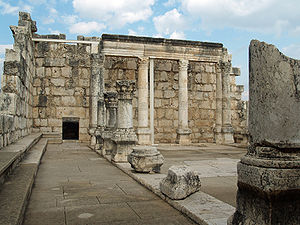
Judaism was also known for its schools, both rhetorical schools and synagogues. Brodie writes that the synagogues dotted the Diaspora, Galilee and Judea, although I have not encountered any archaeological evidence for synagogues in Galilee prior to the fall of Jerusalem in 70 CE. (Yes, their being part of the Gospel landscape, along with Pharisee-“Christian” dissension, are, I believe, anachronisms that point to late first-century/early second century compositions.)
We are aware of the Jew Philo’s phenomenal literary output. Some scholars suggest that a “school of Philo” was responsible for much of this output rather than one individual. Philo himself
located the bulk of his scholastic activity with the sabbath-day teaching of the synagogues, which he describes (in an intentional comparison with the Greek philosophical schools) as “schools of Moses” (Alexander 1992: 1010). (p. 189)
* * *
4. The scholarly linking of biblical books with schools gives further support to the idea of a New Testament school
- M. Weinfeld identifies a “Deuteronomic school” that evolved in its ideas over the duration of its existence
- P. Davies applies Weinfeld’s reasoning to other biblical works and sees schools behind all the (OT) biblical literature.
- K. Stendahl finds a “school of St Matthew” – Matthew’s use of the OT resembles that of the Qumran school (cf its Habbakuk commentary). Further, a scribe cannot work alone. He works in conjunction with peers — a school.
- D. E. Orton thought Matthew sees himself in the tradition of prophets and apocalyptic scribes, of Ben Sirach and Qumran.
- Loveday Alexander and J. N. Collins have shown in different ways the importance of the idea of schools to Luke, and to his adaptations of the Old Testament and compositions of historical and biographical writings.
- Many scholars have published arguments for a “school of John” to explain the various Johannine writings.
- R. B. Hays and D. A. Koch think the Pauline writings are so engaged with the OT that their author/s were surrounded by manuscripts and some scholars have suggested that the various letters of Paul were written by “co-workers” or “co-writers”.
- The Letter of Aristeas contains a somewhat fanciful account of how the OT was translated into Greek by 72 elders, but the idea it expresses of a community of writers engaged in a single project may not be far off the mark.
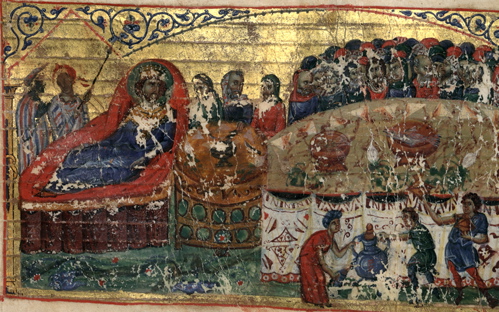
The above theories of schools are justified by a combination of the similarities and differences within groups of writings. Was such a community responsible for the New Testament writings? Brodie believes so. (I would suspect several may have been involved, some in rivalry — e.g. the Pauline and Johannine communities.)
* * *
5. The quest for the sequence of the books
A more fruitful inquiry than trying to outline the rise of earliest Christianity, Brodie writes, would be to try to analyse the writings of the NT and work out their relationship to one another — in particular what was written first, what the response was, etc. To some extent that has been done with the establishment of Markan priority and identifying Deutero-Pauline epistles.
Eventually, when the essential sequence of the New Testament documents has been reasonably well established, there will be a backbone concerning the history of writing, and around that backbone it should be possible to build further history. (p. 194)
* * *
6. The truth of writing
This final section of chapter 19 is a segue into the final three chapters where Brodie shares his thoughts on the meaning of Christianity without an historical Jesus, on the meaning of faith, of God, of life and spirituality.
Essentially Brodie reminds readers that imagination, stories, symbols, can be gateways to deeper truths. If Jesus is a story, that story is packed with meaning and truth about God. This chapter’s concluding paragraph:
The essential point is basic: ‘Art’, ‘fiction’, and ‘imagination’ may at first suggest something unreal, but in fact they can be the surest guides to the deepest truth. The accounts of Jesus may in one sense be fiction, and may be shaped by many older accounts, including for instance the account of the death of Socrates. But art at its best can reach to the core of the truth, and symbols do likewise. The word ‘fiction’ is ambiguous. It can indicate what is untrue, but it can also refer to a writing which, though not historical, is a searing depiction of reality, of radical truth, and the Gospels are a supreme example of such writing. (p. 196)
Brodie’s obvious love for God and “the Christ myth” as a deeply meaningful way to that God reminds me to some extent of another mythicist, Paul-Louis Couchoud, who, though not a Christian, expressed the highest admiration for that faith. (See Mythicism and Positive Christianity; see also Couchoud’s last chapter of Creation of Christ)
It is time anti-mythicists stop their absurd mud-slinging and bracketing of all mythicists as some sort of “angry atheist” types filled with all sorts of sinister or fatuous motives and actually make the effort to hear and address the actual arguments, — not straw-man fabrications conjured up to match their theories of sinister and perverse God-haters hell-bent on destroying Christianity.
The final scene will give us a glimpse into Brodie’s faith in God and ongoing love for Christianity.
If you enjoyed this post, please consider donating to Vridar. Thanks!

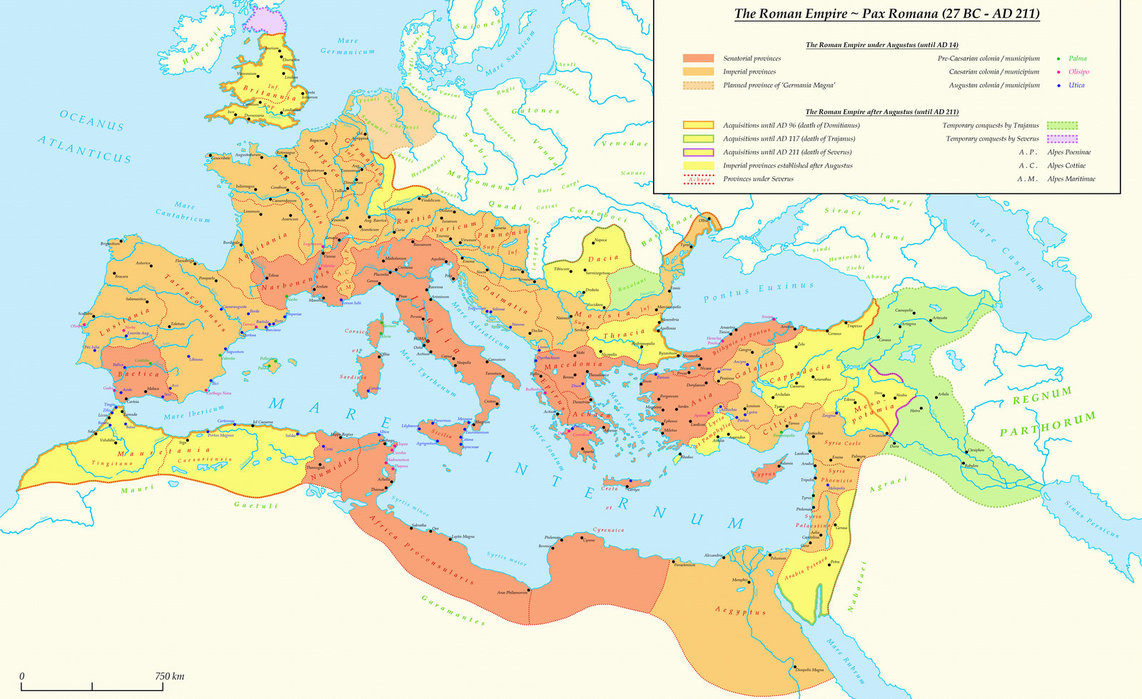
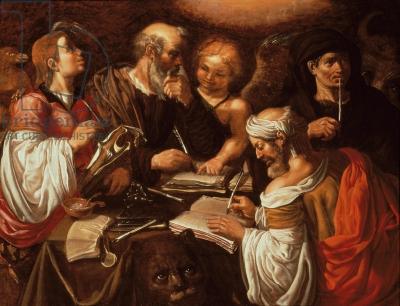
I have been reading as many posts as I can from this blog for 1.5 years or so. I have not commented yet, but today I really wanted to express my gratitude for your work in terms of how it helps me understand the religion of my ancestors, family, and my own religion by choice during certain periods of my life. I heard about Fr. Brodie’s work a while back, but I don’t have time to read his books, so your posts are the next best thing. My appreciation is also extended to other commentaries and analysis that you produce here.
You’re most welcome. A main reason I wanted to start this blog in the first place was to share what I have learned from the readings of scholarly works with others like you. In the sciences there are many persons and agencies dedicated to making publicly accessible the new understandings that are being generated in those fields, but when it comes to biblical studies most works aimed at the public are confessional in some way.
And then we have the unprofessional approach of so very many theologians/biblical scholars who present their personal views as if they are the final word. Their readers would be so often forgiven for not even being aware that there are alternative views. (Are they competing for personal followers, “fans”?)
When I looked back I wished I had more information about what the scholars have learned about the Bible, and since I am fortunate enough to gain access to so much since, it is a pleasure to be able to share as much of it as I can with others.
A handful of authors have on occasion expressed some concern over posts where I do spell out so much detail of what they have published, and I have always endeavoured to respect the wishes of authors. At the same time, one thing I do point out to those who do express some concern is that the more a work is made visible through the web the more likely it is that interested readers will seek out the original book for themselves. No serious researcher or interested party is going to rely on second hand information about a work.
Meanwhile, those who do not have a budget for the works will still gain some idea of what is being produced in the scholarly world, and that in turn can only lead to a better informed public, one potentially more critically engaged with all else they read, and to a wider awareness of the original work and an higher likelihood that those who are interested and financial will buy the book.
I have noticed, for example, several comments appearing on my latest Brodie series expressing a desire to buy and read Beyond the Quest for themselves as a direct result of reading my outlines of key sections of it.
The cross to hang a sacrificed paschal lamb was not a “Jewish custom” per se; it was how animals were roasted by many peoples probably. It was only Christian “hermeneutics” that turned this barbeque trivia into something of cosmic significance. Justin Martyr correctly recognized that this method of selecting, killing, and hanging the paschal lamb during passover (and exclusively in Jerusalem) was the real inspiration for the Barrabas myth and indeed the crucifixion itself.
Saint Justin Martyr (110-165)
Dialogue with Trypho
Translated by Alexander Roberts and James Donaldson
Chapter 40
“The mystery, then, of the lamb which God enjoined to be sacrificed as the passover, was a type of Christ; with whose blood, in proportion to their faith in Him, they anoint their houses, i.e., themselves, who believe on Him. For that the creation which God created—to wit, Adam—was a house for the spirit which proceeded from God, you all can understand. And that this injunction was temporary, I prove thus. God does not permit the lamb of the passover to be sacrificed in any other place than where His name was named; knowing that the days will come, after the suffering of Christ, when even the place in Jerusalem shall be given over to your enemies, and all the offerings, in short, shall cease; and that lamb which was commanded to be wholly roasted was a symbol of the suffering of the cross which Christ would undergo.
“For the lamb, which is roasted, is roasted and dressed up in the form of the cross. For one spit is transfixed right through from the lower parts up to the head, and one across the back, to which are attached the legs of the lamb. And the two goats which were ordered to be offered during the fast, of which one was sent away as the scape [goat], and the other sacrificed, were similarly declarative of the two appearances of Christ: the first, in which the elders of your people, and the priests, having laid hands on Him and put Him to death, sent Him away as the scape [goat]; and His second appearance, because in the same place in Jerusalem you shall recognise Him whom you have dishonoured, and who was an offering for all sinners willing to repent, and keeping the fast which Isaiah speaks of, loosening the terms of the violent contracts, and keeping the other precepts, likewise enumerated by him, and which I have quoted, which those believing in Jesus do. And further, you are aware that the offering of the two goats, which were enjoined to be sacrificed at the fast, was not permitted to take place similarly anywhere else, but only in Jerusalem.”
Thanks for this. Nodet and Taylor see in Justin’s words an indication that despite the ban on worship in Jerusalem after the Temple’s destruction in 70 CE and then the final destruction in 135 CE that there appear to have been at least some sects still practicing such rituals in Jerusalem nonetheless. Either that or Justin was writing much nearer to the memory of the Hadrian-Bar Kochba war than often thought.
Brodie’s comment about the role of “fiction” in belief is interesting. It turns out that reading fiction is a double-edged sword; not only is it possible that something fictitious might offer some moral truth, but reading fiction also injects morality into us. Reading fiction seems to makes us temporarily adopt the morality of the people we read about.
That is interesting. We know many Greeks upheld Achilles as their ideal exemplar — pursuing one’s best to serve the greater cause despite knowing that in the process it would cost one one’s own life — and we know the literate evangelists had read their Homer and that Jesus is a Jewish adaptation and recreation of the values epitomized in Achilles. (If the Church Fathers compared Jesus with Socrates, Socrates aspired to be like Achilles.)
I’m also reminded of the saying that Americans may consult pyschiatrists but the British read novels. (Or was that just a Hugh Grant line from the Notting Hill film?)
What catalyzed my decision to “depart the faith” was when it suddenly dawned upon me that it was not the object of my faith that enabled me to feel like I had a “new life”, was “born again”, had “the mind of Christ”, felt totally forgiven and unconditionally loved and saved, — it was my faith itself that all these things (that I was so loved that Christ died to reconcile me to God) were true that was performing the magic. If I believed the same things about a totem pole or a small pebble that I was believing about God and Jesus (that they were agents in loving me so much etc) then I would have had exactly the same “change of heart” and conversion experience. It was not God or the pebble that was the agent of my change and salvation, it was my own faith.
As believers we are expected to focus our thoughts constantly on Christ — in particular “Christ crucified” — (or Achilles — depending on what we are believers of) and this encourages a type of ‘cognitive behaviour therapy’ whereby we tend to block out contrary thoughts.
We are what we think, whether that derives from history, our families or fiction (we do think about what we read) — it makes no difference.
Yes I may have to buy some of the works you link to in your posts. I am solid in my apostasy, but cultural conditioning is such that
I need to keep studying/reflecting in order to have an informed apostasy. I don’t want to be a shrill ex-believer who relies on
angry rhetoric about their former faith. Also I enjoy TW’s posts here, did not want to leave him out of my salutations.
Additionally, the “cross” used to spit and hang the lamb who was being roasted reflects on what was apparently the standard Roman crucifixion device of the day.
Saint Justin Martyr (110-165)
Dialogue with Trypho
Translated by Alexander Roberts and James Donaldson
Chapter 91 (first half) (emphasis mine)
Now the phrase, “on which are suspended those who are crucified” (Gk. ef’ w epoxountai oi stauroúmenoi) could also be translated, “upon which ‘ride’ those who are being impaled (or are impaling themselves [!])” due to the infamous medium voice expressed by the conjugations used for both the verbs epoxeuw / epoxeomai and staurow, whose meanings can be looked up on the web at Tufts’ Perseus Greek Word Study Tool. Of course, scholars were left in the dark as to how the crucified “rode” that central horn that stood out and even looked like an actual horn until the Vivat Crux and Pozzuoli graffiti were discovered.
This site is simply incredible. Years of frustration have been remedied by this blog. I am in no way intellectually on par with most people here but I am learning about tools and how to use them when approching not just the bible but literature overall. I can’t wait to see what the next topic is almost daily.The comments also are very informative. I was once also a true beliver but want to be informed and intelligent in my responses. I wish I knew then what I’m learning now!
It’s nice to know we are achieving our goals. Tell your friends 🙂
I realize I’m late to the party, but I just came across this page searching for something else.
I’m curious as to why you have an image labelled as the Codex Sinaiticus when it is clearly something else? It’s the image immediately under the heading “chapter 19.”
The image was evidently taken from another site such as the Wikimedia. You can track its provenance down via a Google Image search. Let us know what you find and what needs correcting.
(Is that image the only problem you found with the article itself?)